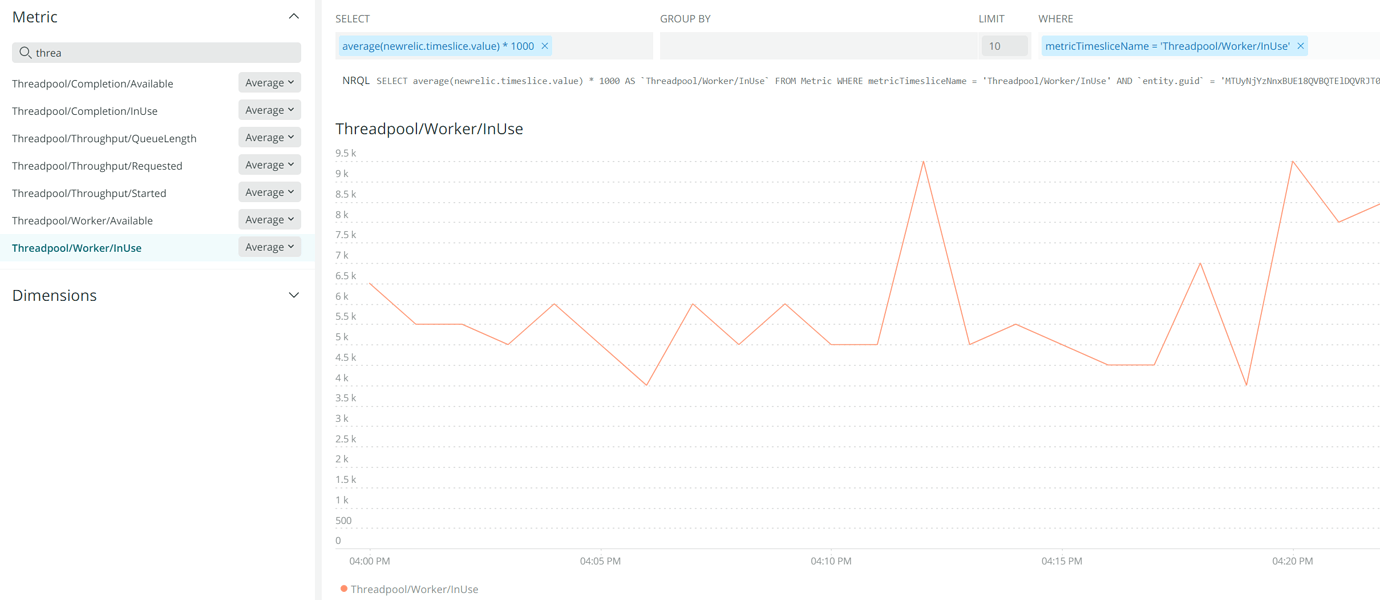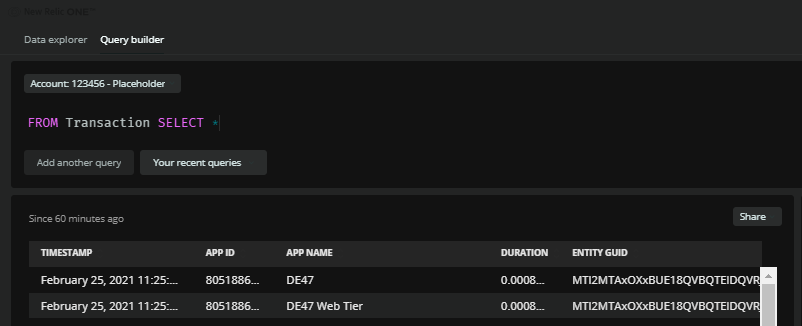

in philosophy at the Graduate Center of the City University of New York.
#New relic timeslice software
To override this, you must specify "timestamp" as a field in your Sumo Logic query (as an unformatted Unix timestamp, in seconds or milliseconds relative to the Unix epoch). New Relic is a Software as a Service offering that focuses on performance and availability monitoring. DePaul Law Review Volume 51 Article 3 Issue 1 Fall 2001 A Time-Slice Approach. For more information, see About Webhook Connections.īy default, a "timestamp" field will be applied in New Relic Insights when the event is received. search_results must include ResultsJson as a variable.Ī maximum of 200 aggregate results or 10 raw messages for this field can be sent via webhook.playing backward, since the mirroring of objects across a time slice is the. eventType can be a combination of alphanumeric characters, underscores _, and colons. Box 208306, New Haven, CT 06520-8306 e-mail:.

Your payload must include "eventType" and "search_results" as parameters. of times the counter was incremented per second during the last timeslice. Select the webhook connection in a Scheduled Search or Monitor to send events to New Relic Insights and use the following payload. Clicking on a map name opens a new page for monitoring that map instance on. + Create a dashboard on the NewRelic insights or NewRelic One. To test Logrotate, run the command below and then check the server’s log/ directories which should contain the compressed files with the logs: $ sudo logrotate -f /etc/logrotate.d/bitnami.Send Events to New Relic Insights using a Webhook Rotating pattern: /opt/bitnami/apache2/logs/*_log weekly (150 rotations)Ĭonsidering log /opt/bitnami/apache2/logs/access_log The command below displays the current Logrotate configuration for your servers: $ sudo logrotate -d /etc/logrotate.d/nf To test Logrotate, run the command below and then check the Apache server’s log/ directory which should contain the compressed files with the logs: $ sudo logrotate -f /etc/logrotate.d/apacheĪccess_log access_log-YYYYMMDD.gz error_log error_log-YYYYMMDD.gzĪpproach B: Self-contained Bitnami installations Rotating pattern: /opt/bitnami/apache/logs/*log weekly (150 rotations)Įmpty log files are rotated, old logs are removedĬonsidering log /opt/bitnami/logs/access_logĬonsidering log /opt/bitnami/apache2/logs/error_log The command below displays the current Logrotate configuration for the Apache server: $ sudo logrotate -d /etc/logrotate.d/apache Approach A: Bitnami installations using system packages Refer to the FAQ for more information on these changes. The output of the command indicates which approach (A or B) is used by the installation, and will allow you to identify the paths, configuration and commands to use in this guide. To identify your Bitnami installation type and what approach to follow, run the command below: $ test ! -f "/opt/bitnami/common/bin/openssl" & echo "Approach A: Using system packages." || echo "Approach B: Self-contained installation." On account of these changes, the file paths stated in this guide may change depending on whether your Bitnami stack uses native Linux system packages (Approach A), or if it is a self-contained installation (Approach B). NOTE: We are in the process of modifying the file structure and configuration for many Bitnami stacks. To record every request, use a different approach for rotating the logs. There is a very small time slice between copying the file and truncating it, so some logging data might be lost. IMPORTANT: The “copytruncate” approach truncates the original log file to zero size in place after creating a copy, instead of moving the old log file and optionally creating a new one. Use the man logrotate command for information on all available options.īy default, Logrotate uses the “copytruncate” approach so it is not necessary to restart the servers. For instance, to configure the Apache Logrotate file, edit the file at /opt/bitnami/config/logrotate/logrotate.d/apache.

Logrotate files for different servers are stored in the /opt/bitnami/config/logrotate/logrotate.d and /etc/logrotate.d directories. If you are using a virtual machine or cloud image, Logrotate is already configured and enabled by default. Recent versions of Bitnami stacks ship Logrotate configuration files for all servers. It allows automatic rotation, compression, removal, and mailing of log files. Logrotate is designed to ease administration of systems that generate large numbers of log files.


 0 kommentar(er)
0 kommentar(er)
